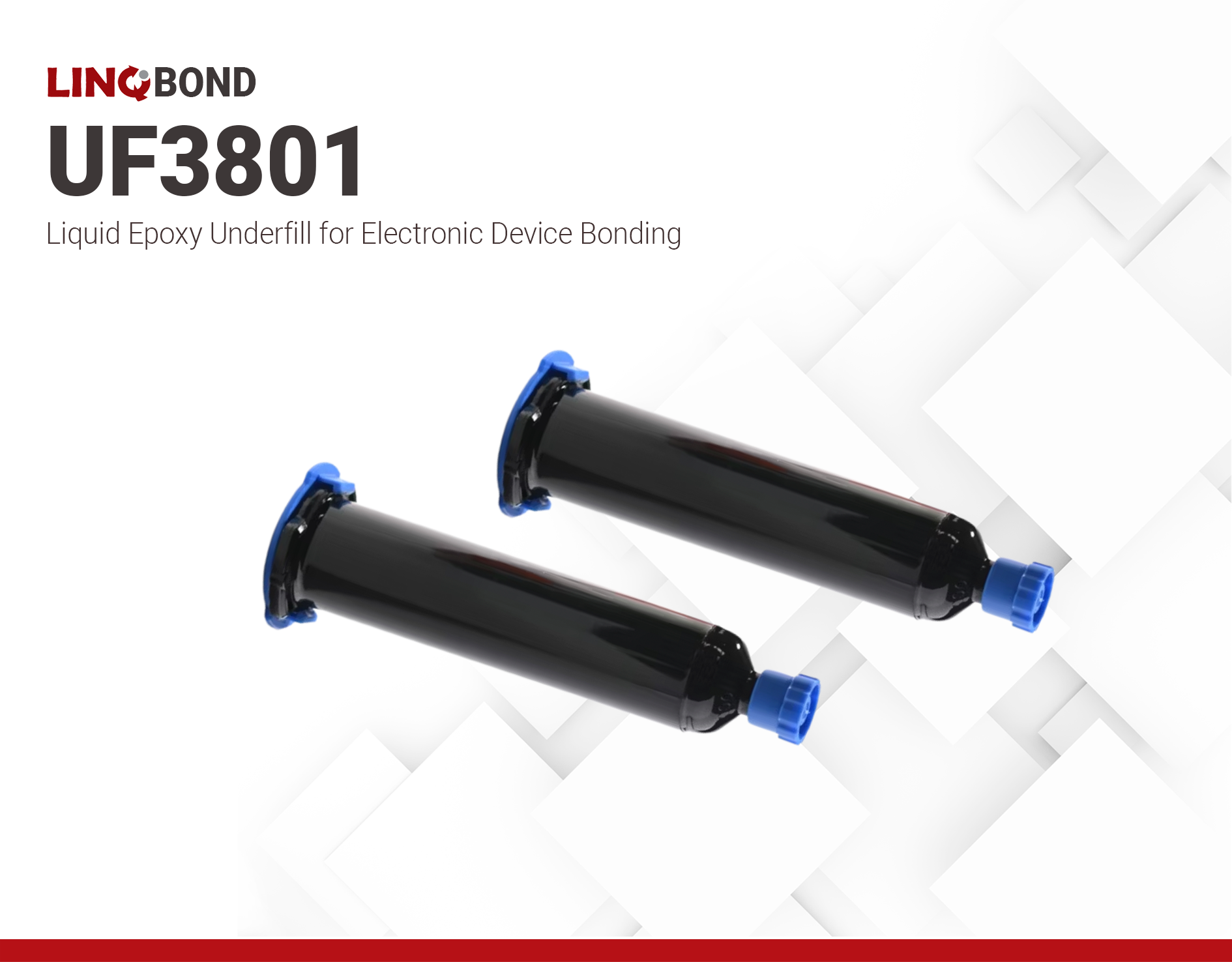LINQBOND UF3801 | Underfill
- solvent-free
- low viscosity
- Fast cure
Product Description
LINQBOND UF3801 is a one-component epoxy adhesive designed for electronic device bonding. It is easy to use and suitable for various applications, such as casting and sealing electronic components. This resin cures quickly at high temperatures, reducing working time and increasing efficiency.
LINQBOND UF3801 forms tough, strong structural bonds that offer excellent shear, peel, and impact strength. The durability of this resin is exceptionally high, and it can successfully pass numerous environmental tests.
Technical Specifications
| General Properties | |
| Pot Life Pot Life Pot life is the amount of time it takes for the viscosity of a material to double (or quadruple for lower viscosity materials) in room temperature after a material is mixed. It is closely related to work life but it is not application dependent, less precise and more of a general indication of how fast a system is going to cure. | 72 hours |
| Specific Gravity Specific Gravity Specific gravity (SG) is the ratio of the density of a substance to the density of a reference substance; equivalently, it is the ratio of the mass of a substance to the mass of a reference substance for the same given volume. For liquids, the reference substance is almost always water (1), while for gases, it is air (1.18) at room temperature. Specific gravity is unitless. | 1.23 |
| Work life @25°C Work life @25°C Work life is the amount of time we have to work with a material until it is no longer able to be easily worked and applied on a substrate. It is based on the change in viscosity and it can rely on the application requirements. | 24 hours |
| Thermal Properties | |
| Glass Transition Temperature (Tg) Glass Transition Temperature (Tg) The glass transition temperature for organic adhesives is a temperature region where the polymers change from glassy and brittle to soft and rubbery. Increasing the temperature further continues the softening process as the viscosity drops too. Temperatures between the glass transition temperature and below the decomposition point of the adhesive are the best region for bonding. The glass-transition temperature Tg of a material characterizes the range of temperatures over which this glass transition occurs. | 131 °C |
| Physical Properties | |
| Viscosity Viscosity Viscosity is a measurement of a fluid’s resistance to flow. Viscosity is commonly measured in centiPoise (cP). One cP is defined as the viscosity of water and all other viscosities are derived from this base. MPa is another common unit with a 1:1 conversion to cP. A product like honey would have a much higher viscosity -around 10,000 cPs- compared to water. As a result, honey would flow much slower out of a tipped glass than water would. The viscosity of a material can be decreased with an increase in temperature in order to better suit an application | 350 mPa.s |
Additional Information
Rework Process:
Component Removal. Component solder joints must be heated above their reflow temperature (260°C to 280°C). At this temperature, the undefill will be soft and easy to remove. Component may then be pulled or removed by twisting or with a use of a vacuum pick-up nozzle.
Site Preparation. After component removal, cleaning of residues may be done by the following methods
- Scraping. Heat the site to 250°C to 300°C and scrape off the underfill carefully avoiding damage of pads on the substrate. Alternatively, heating can also be done from the bottom of the substrate.
Rotating Brush. Apply sufficient amount of pressure onto the brush to clean the residues. Care should be taken to avoid damage to substrate.
- Component Replacement. Isopropanol or a flux pen may be used to ensure no residue remain on the circuit board after cleaning. Brush solder paste or flux on the board and align the new component using vacuum and reflow using hot air. Underfill will likewise be applied followed by cure step.
Storage and Handling
Store and transport below -5°C temperature. Keep away from moisture and heat sources. It is strictly forbidden to store in outdoor environments.



